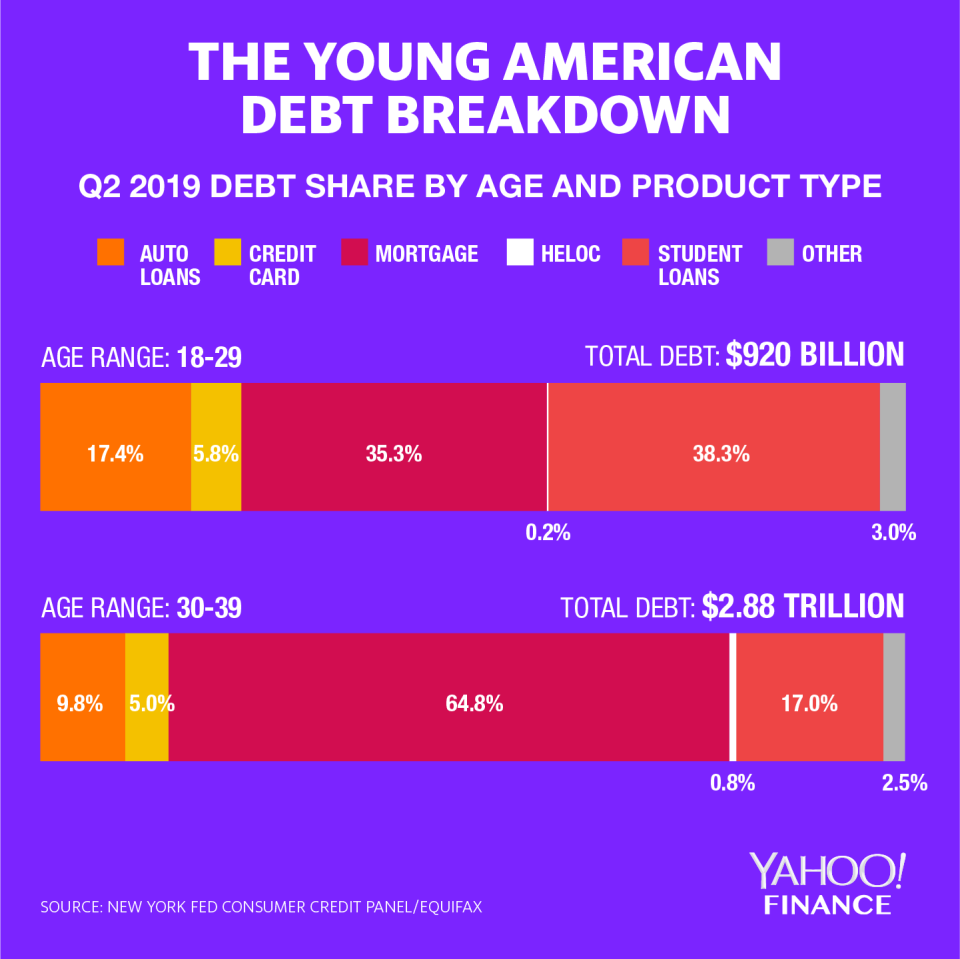Buy-now, pay-later app Afterpay is booming
Buy-now, pay-later options are surging, and Afterpay is riding the wave.
The Australian fintech company — which offers buy now, pay later options for consumers — announced stunning huge results, noting that the underlying global sales for the fiscal year of 2019 increased by 140% to $5.2 billion.
The company — which entered the U.S. market just 15 months ago — stated that it had 4.6 million active customers, up 130% from the previous year, and was currently on-boarding over 12,500 new customers per day.
“We are extremely pleased with the FY19 results in which the company improved across every key metric—customers, retailers, GMV, income net transaction margin and losses,” Afterpay Co-Founder and U.S. CEO Nick Molnar told Yahoo Finance. The “results are a testament to the success of our business model and our laser focus on our customers.”

Growth in America as well as the UK was “exceeding expectations,” the annual report said, and “major new merchants continue to onboard.”
The company had over 6,500 merchants onboarded — or being onboarded — into their system, giving them access to over 2.1 million active U.S. customers.
Molnar added that “there is so much runway ahead. We continue to engage and integrate with new merchants and consumers, while evolving our technology platform with new capabilities and services for our customers. We couldn’t be more excited about the opportunity ahead.”
The company noted that underlying sales in the U.S. “continued beyond expectations, increasing to almost $1 billion in the first full year of operations.” The company expects a current run-rate in excess of $1.7 billion.

Additionally, the rate of U.S. customer acquisition “is accelerating as the network effect of our platform plays out,” the report stated, adding that the U.S. is “currently acquiring 50% more new customers per day than the FY19 daily average.”
Banking on millennials and Gen Z
In a detailed presentation, Afterpay noted that millennials and Gen Z are “driving change in global spending habits which is meaningful today and will be even more meaningful in 10 years” and that “Afterpay is uniquely positioned to benefit from this shift.”
In Australia, the company found that 27% of millennials in Australia have used Afterpay.
“U.S. millennials and Gen Zs are similar to those in [Australia],” Molnar said. “These shoppers prefer a way to pay that allows them to pay over time, without incurring revolving debt, paying interest or fees — especially when buying fashion and beauty.”

Customer retention has also been strong with Afterpay, the company reported, with those who started purchased items with the company more than 3 years ago are now purchasing more than 20 times a year.
“The relationship is clear,” the report stated. “The longer that the longer that customers are on our platform the more they purchase and the more they love Afterpay.”
The average transaction value on Afterpay is around $150, and the average outstanding balance is $218 — far lower than what a credit card holder would carry, at $3,260.

Afterpay customers are also expected to see more retailers appear on the platform, including Ulta Beauty , MAC Cosmetics, Anastasia Beverly Hills, Untuckit, BCBGeneration, Rebecca Taylor, Dockers, Hourglass Cosmetics, Sakara and even Kylie Skin.
The company also highlighted a strategic partnership it had signed with VISA to fuel more growth.
“The agreements will facilitate the ability for Afterpay to expand the delivery of its services to merchants and customers in a more flexible and efficient manner,” the report stated. “The payments and [installments] markets are very large and diverse and both Afterpay and VISA see significant scope for collaboration for our mutual benefit.”
‘The disruption of retail banking is coming’
Afterpay’s rapid growth is mirrored by other startups that are also offering buy now, pay later options.
Stockholm-based Klarna, which also happens to be Europe’s biggest fintech startup, also believes that the buy-now, pay-later boom is going to revolutionize banking.
“I believe that in the next couple of years, the true disruption of retail banking is coming,” Klarna CEO Sebastian Siemiatkowski said in a previous interview with Yahoo Finance’s On The Move (video above). “What I want to be part of … is transitioning this industry that has forgotten about the customers, that offers non-imaginative products, and really serve the consumers in the financial space.”
—
Aarthi is a writer for Yahoo Finance. Follow her on Twitter @aarthiswami.
Read more:
Follow Yahoo Finance on Twitter, Facebook, Instagram, Flipboard, SmartNews, LinkedIn,YouTube, and reddit.

 money
money 
